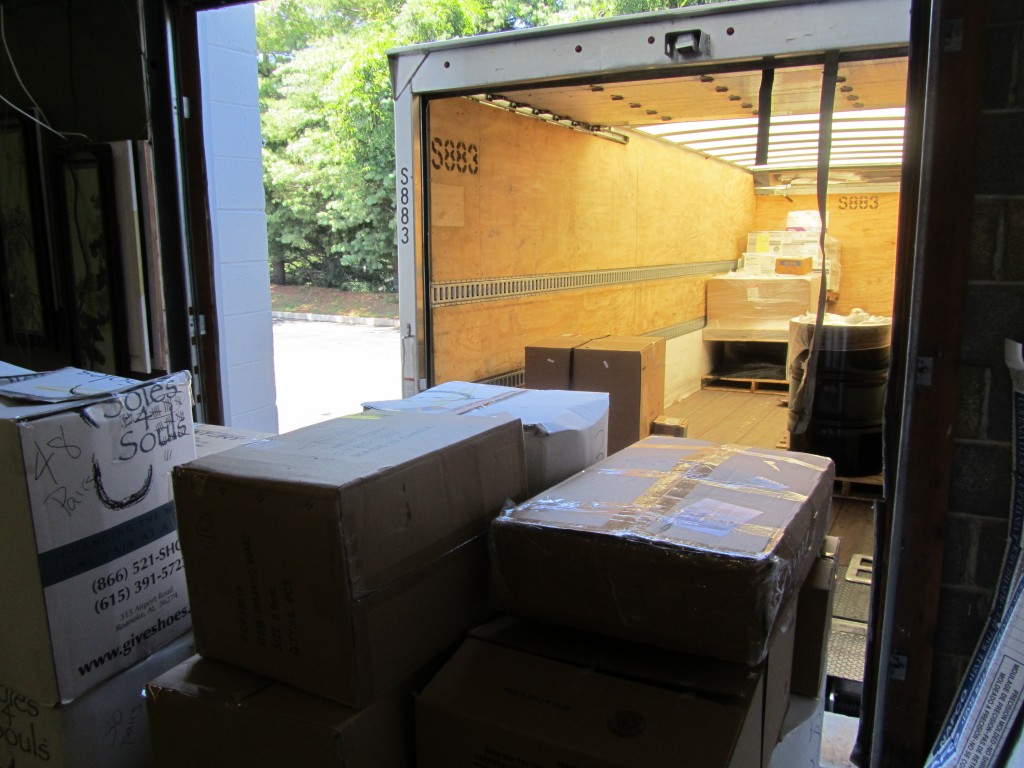Office Depot and Target are two companies among many that give donations of backpacks and school supplies to children as they start the new school year.
Through the award-winning National Backpack Program, which is now in its 11th year, the Office Depot Foundation will help deserving children prepare for school by donating 350,000 sackpacks across the United States and internationally. The newly designed sackpacks, which were specially created for the Foundation, reflect and respond to changes in the ways that children are taking their materials to school.
In many communities, Target stores will team up with local charities to provide new clothes and school supplies to children as they get ready for the school year.
Why is this so important? It is amazing the difference it can make on the outlook of a child if they are able to have the proper school supplies and a few new things – for the start of their new school year. It can get them off on the right foot and make them feel a bit more confident.
 We have that opportunity also in our community, by either putting together a backpack with school supplies for a specific child or providing just $50 to AACPS with the note (backpack project). Imagine the look in the eyes of a young child as they have brand new supplies like everyone else as they go off to school. You may choose to put a brief note of encouragement in the bag too. (you will not find this on aacps website. It is run by individuals in the administration of the school system, and I am fortunate enough to have a contact that will accept our donations too!)
We have that opportunity also in our community, by either putting together a backpack with school supplies for a specific child or providing just $50 to AACPS with the note (backpack project). Imagine the look in the eyes of a young child as they have brand new supplies like everyone else as they go off to school. You may choose to put a brief note of encouragement in the bag too. (you will not find this on aacps website. It is run by individuals in the administration of the school system, and I am fortunate enough to have a contact that will accept our donations too!)
Last year one simple note of encouragement “You are going to have a great year”, was saved by the student for the entire year in his desk. He was motivated by that note all year long. If you are interested in helping, just let me know and I will be happy to tell you how you can do so. Time is of the essence.



 For teachers, the classroom is a mix of many personalities and abilities of the students. Teachers are expected to fill many roles in their efforts to care for the academic needs of the students and yet we know that just having ‘knowledge’ is not the key to success in life. As children get older and move into the t’weens age, social issues arise and they can have a definite affect on the ability of a student to learn. While social intelligence is not the ‘responsibility’ of the teacher, the best teachers are those that reach their students in ways beyond facts and figures.
For teachers, the classroom is a mix of many personalities and abilities of the students. Teachers are expected to fill many roles in their efforts to care for the academic needs of the students and yet we know that just having ‘knowledge’ is not the key to success in life. As children get older and move into the t’weens age, social issues arise and they can have a definite affect on the ability of a student to learn. While social intelligence is not the ‘responsibility’ of the teacher, the best teachers are those that reach their students in ways beyond facts and figures.
